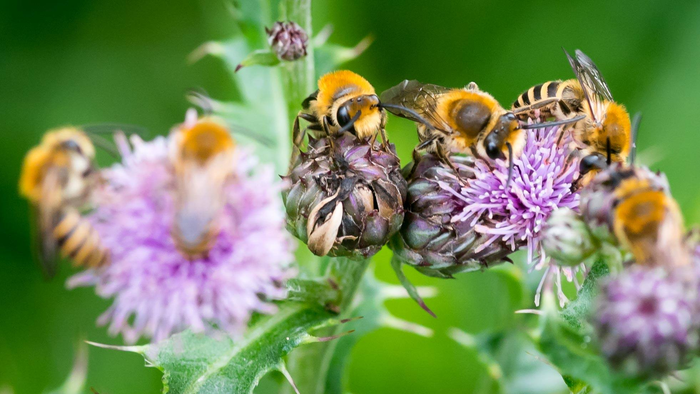
Weeds are much more valuable to pollinators than expected
Researchers at the University of Sussex, with funding from Rowse Honey Ltd, have proven that weeds are far more valuable in supporting biodiversity and pollinators than we give them credit for.
The study compared the biodiversity value of “injurious weeds” with plants that are known to support pollinator health as identified by the UK’s Department for Environment, Food and Rural Affairs (DEFRA)
In the 1959 Weeds Act, five species of native wildflowers were classified as “injurious.” Despite their classifications, three of them are visited by many species of bees and other insects. The other two are docks, whose flowers are mainly wind-pollinated.
Dr. Nicholas Balfour conducted a field study in East Sussex to observe insects visiting the flowers of weeds such as ragwort and thistles, and other wildflowers, including those recommended by DEFRA. The study revealed that pollinators visited weeds at a much higher rate than the DEFRA recommended plants.
“There now exists a substantial body of evidence which shows that weeds are a vitally important resource for pollinators,” said Dr. Balfour.
“The three insect-pollinated species have open flowers that allow access to a wide variety of pollinator species, and they produce, on average, four times more nectar sugar than the DEFRA recommended plant species.”
The findings are supported by a scan of existing scientific literature. For example, the Database of Pollinator Interactions demonstrates that both pollinator species and conservation-listed species are up to five times more likely to visit weeds. The database includes information on 387 plant and pollinator interactions – of which weeds are ranked 4th most visited.
“Pollinators are crucial to maintaining global biodiversity, ecosystem resilience and agricultural output. However, there are significant concerns about pollinator declines and the long-term decline of flowers in our landscapes is considered a key factor,” explained Dr. Balfour.
The researchers acknowledge that agricultural weeds can affect pastureland, but emphasized that the value of flower-visiting insects should not be underestimated when it comes to natural biodiversity.
Sadly, weeds are not only underestimated, but are targeted for aggressive removal, with as much as £10 million per year spent controlling injurious weeds. Local councils in the UK indicated that the most targeted weed is ragwort, which is considered an invasive species.
“It is alarming that the many public bodies are using tax-payers’ money and volunteers to actively remove ragwort. This plant was found to support the most conservation-listed insect species in our study,” said Dr. Balfour.
“Our results clearly show that weeds have an underappreciated value in supporting our natural biodiversity. Unfortunately, current UK agricultural policy encourages neither landsparing for, nor landsharing with, weeds.”
The study authors are encouraging policymakers to review existing policies and how they are implemented to reconsider the role of weeds in future agriculture and environmental policy.
This is a timely opportunity to influence policy as The Environmental Land Management Scheme, to be rolled out by 2024, will largely replace the schemes currently available under the EU Common Agricultural Policy. The researchers are hopeful that this policy will incentivize and persuade land managers to tolerate injurious weeds, and to acknowledge the vast benefits weeds provide to the natural world.
The study is published in the Journal of Applied Ecology.
Image Credit: Allan Burrows
—
By Katherine Bucko, Earth.com Staff Writer












